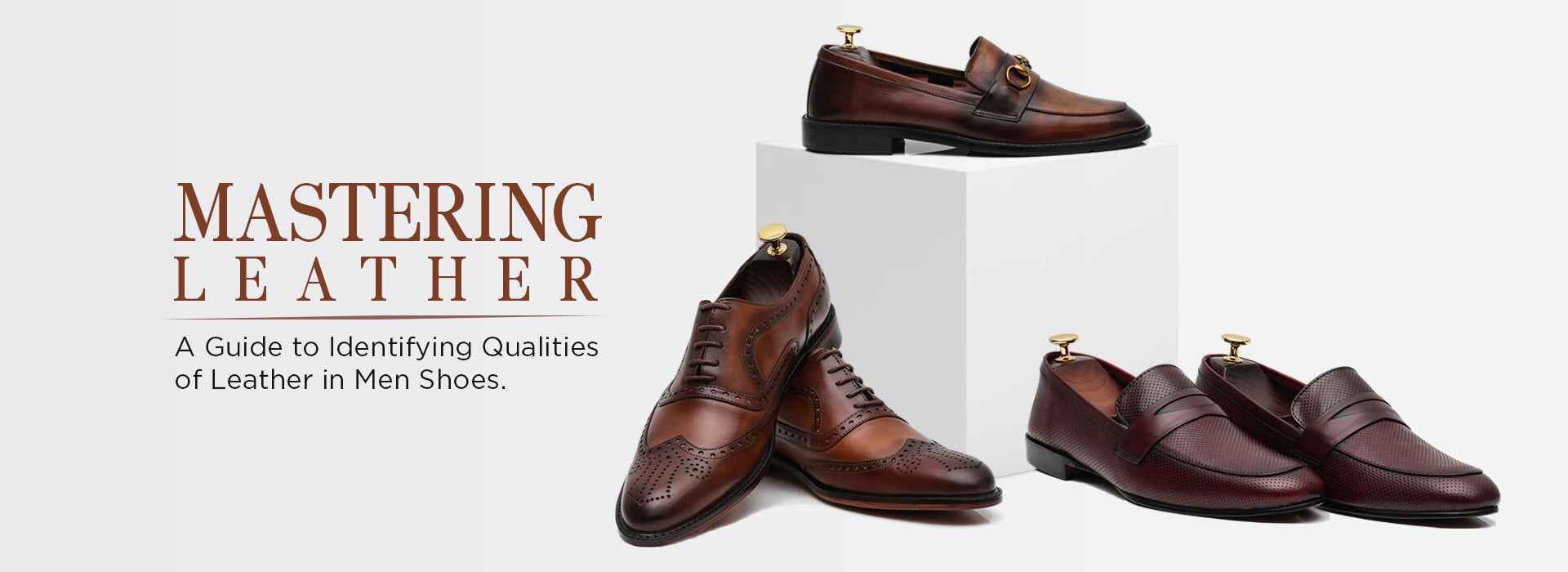Mastering Leather: A Guide to Identifying Qualities of Leather in Men Shoes

Leather has long been revered for its durability, timeless elegance, and luxurious feel, making it a popular choice for crafting high-quality men's shoes. However, not all leather is created equal, and understanding the various qualities can help you make informed decisions when purchasing footwear. In this guide, we'll delve into the world of leather and provide you with essential tips for identifying its qualities in men's shoes.
1. Types of Leather:
Full-grain Leather: Considered the highest quality, full-grain leather retains the natural grain and imperfections of the hide, resulting in a durable and breathable material.
Top-grain Leather: Slightly more processed than full-grain, top-grain leather has been sanded and buffed to remove imperfections, but it still maintains strength and durability.
Genuine Leather: Despite its name, genuine leather is actually a lower quality compared to full and top-grain. It is made from layers of leftover hides and is more prone to wear and tear.
Bonded Leather: This is made from scraps of leather that are bonded together with adhesive. It is the lowest quality and lacks the durability and longevity of higher-grade leathers.
2. Texture and Feel:
- Run your fingers across the surface of the leather. High-quality leather should feel smooth and supple, with a slight graininess.
- Press down on the leather with your thumb. Quality leather will quickly bounce back, while lower-quality leather may leave a permanent indentation.
- Pay attention to the thickness of the leather. Thicker leather is generally more durable and long-lasting.
3. Smell:
- Genuine leather has a distinctive, rich aroma that is often described as earthy or musky. This scent comes from the natural tanning process and is a good indicator of authentic leather.
- Synthetic materials or low-quality leather may have a chemical or plastic-like smell.
4. Visual Inspection:
- Examine the surface of the leather for any imperfections such as scars, blemishes, or discolorations. While some minor imperfections are normal and can add character to the leather, excessive flaws may indicate lower quality.
- Look at the edges of the leather. High-quality leather will have clean, well-finished edges, while lower-quality leather may appear rough or unfinished.
5. Flexibility:
- Bend the shoe gently to assess the flexibility of the leather. Quality leather will flex easily without creasing or cracking.
- Low-quality leather may feel stiff and rigid, indicating a lack of suppleness and flexibility.
6. Brand Reputation and Certification:
- Research the brand's reputation for using high-quality materials and craftsmanship.
- Look for certifications such as "genuine leather" or "full-grain leather" to ensure authenticity.
7. Price:
- While price alone is not always indicative of quality, exceptionally low prices may signal inferior materials or craftsmanship. Invest in shoes that offer a balance of quality and value.
In conclusion, mastering the art of identifying the qualities of leather in men's shoes requires attention to detail and an understanding of the different types of leather available. By considering factors such as texture, smell, visual appearance, flexibility, brand reputation, and price, you can confidently select footwear that not only looks stylish but also offers durability and comfort for years to come. Happy shoe shopping!
